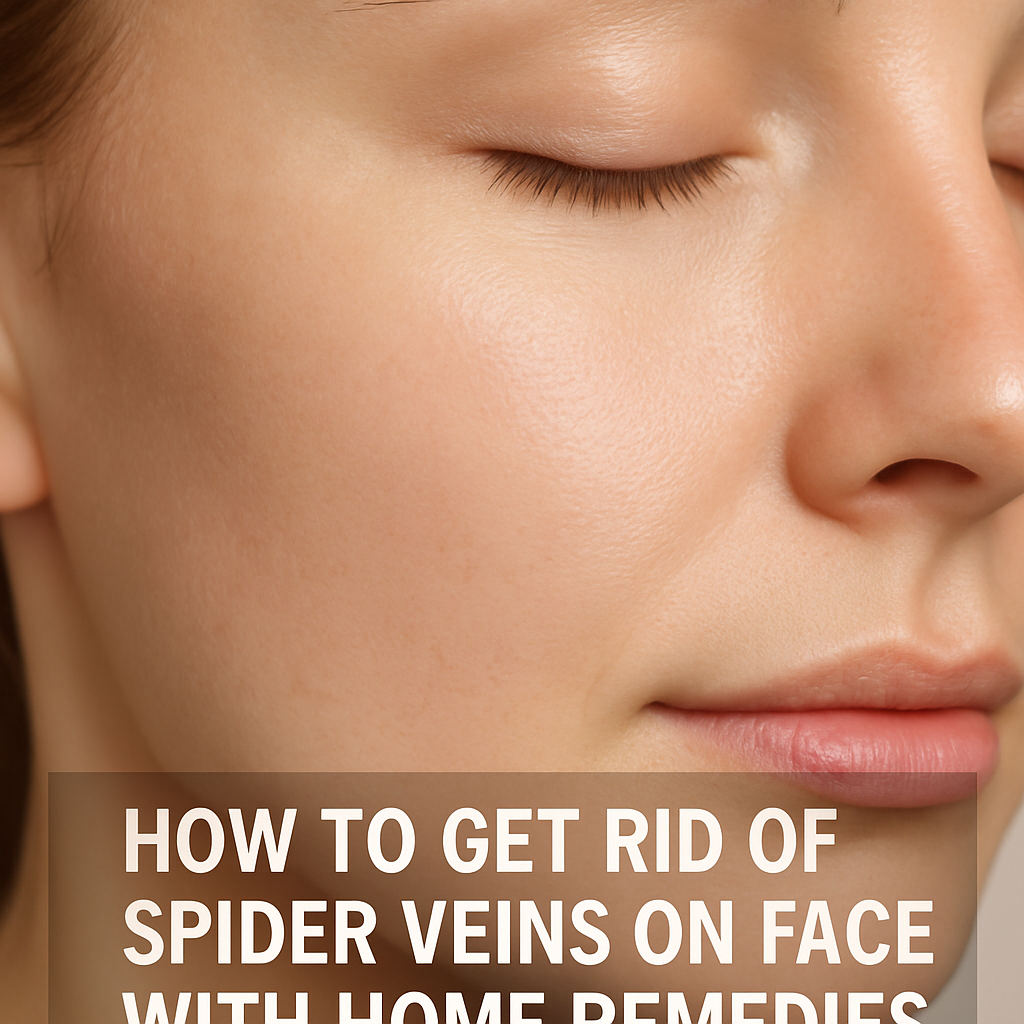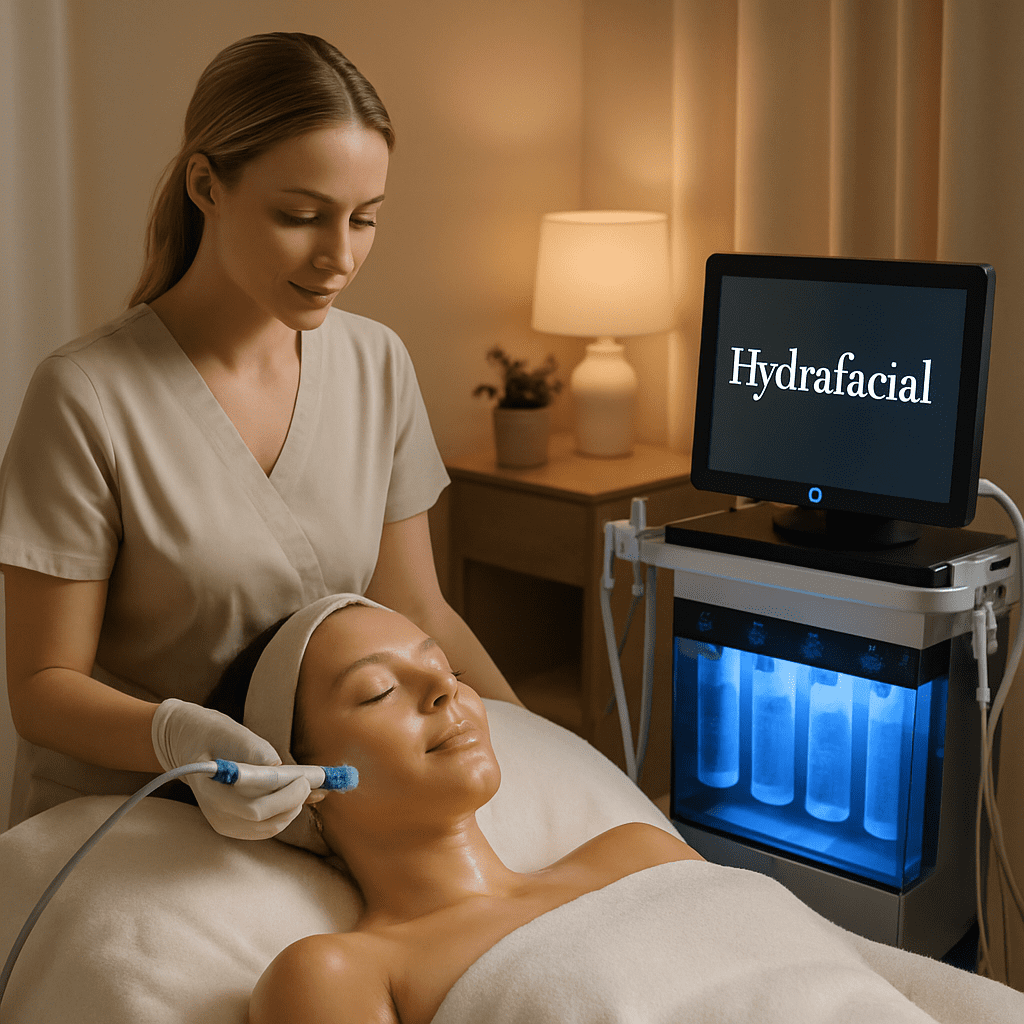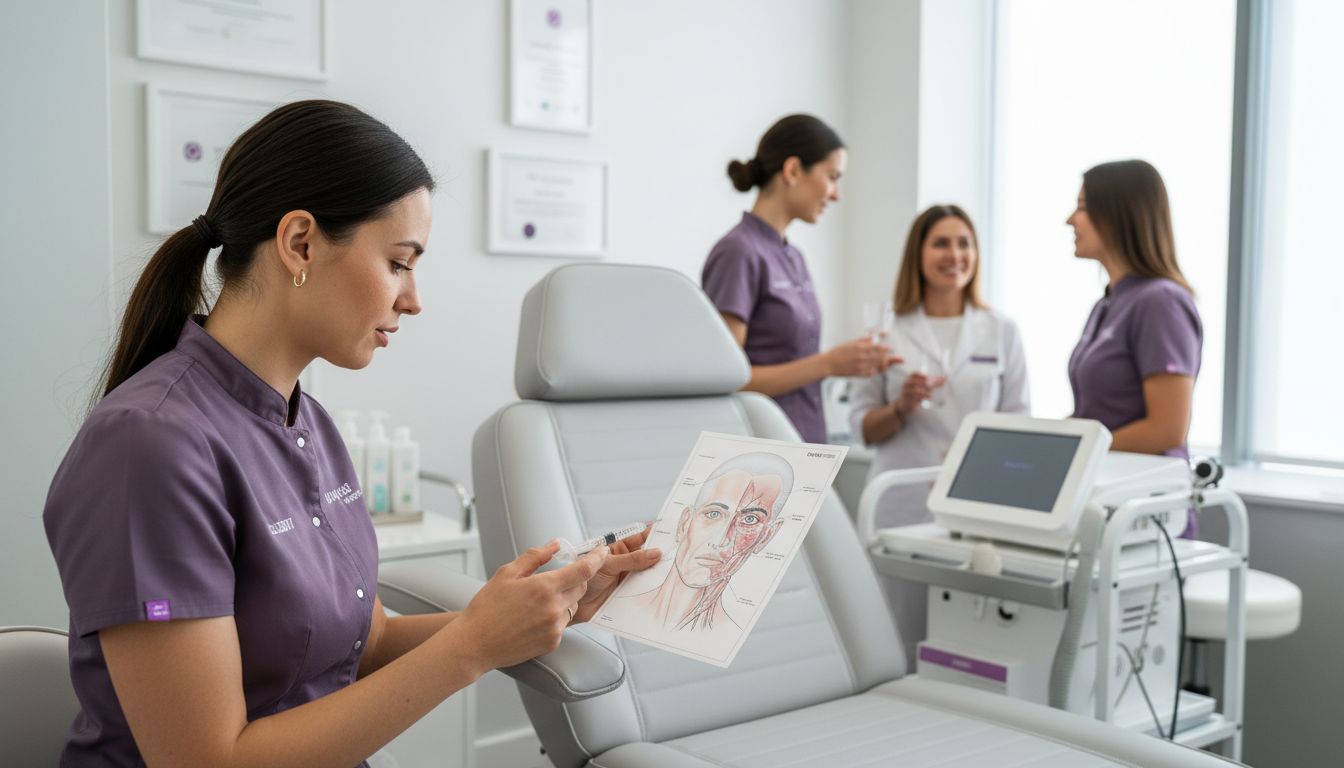Ever caught yourself staring at those tiny, red lines spidering across your cheek and thinking, ‘Why does this happen to me?’
You’re not alone. Those little vessels—called spider veins—can show up when blood pools just beneath the skin, often after sun exposure, hormonal shifts, or even a bit of genetics. It’s frustrating because they’re so visible, especially on the face where we want a smooth canvas for makeup or a natural glow.
But here’s the good news: there are real, proven ways to fade or even erase them without resorting to drastic surgery. In the next few minutes, we’ll walk through what actually works, why some home remedies fall short, and how a modern medspa like Simcoe Cosmetic Clinic can tailor a solution just for you.
Think about it this way: treating spider veins is a bit like pruning a garden. You don’t yank every branch willy‑nilly; you target the ones that distract from the overall beauty. Similarly, laser therapy, intense pulsed light (IPL), and sclerotherapy are the precise tools that gently coax those veins to disappear.
You might wonder, ‘Do I need a needle? Is it painful?’ The answer depends on the method. Laser and IPL feel more like a warm snap—some tingling, but most people describe it as tolerable, especially with a cooling gel. Sclerotherapy involves a tiny injection, but the needle is so fine that the discomfort is brief.
Now, before you book an appointment, there are a few things you can do at home to keep those veins from getting worse. Wearing sunscreen daily, avoiding excessive heat, and staying hydrated are simple habits that protect the delicate vessels on your face.
So, what’s the first step? Start by assessing how prominent the veins are and what triggers them for you. Then, schedule a quick consultation where a specialist can examine your skin, discuss your goals, and recommend the most effective, low‑downtime treatment.
Ready to reclaim a smoother complexion? Let’s dive into the details of each option and discover which one fits your lifestyle and budget.
TL;DR
Spider veins on the face can be frustrating, but with a quick assessment, targeted laser, IPL, or sclerotherapy, you can soften or erase them without surgery, while simple home habits like sunscreen and hydration keep new veins at bay.
Schedule a brief consultation at Simcoe Cosmetic Clinic to personalize a low‑downtime plan that fits your lifestyle and budget.
Step 1: Identify the Cause of Facial Spider Veins
Before you can choose a treatment, you have to know why those little red threads showed up in the first place. It feels almost like a mystery you’d solve over coffee, and the good news is the clues are usually right there on your skin.
Take a moment to look at the pattern. Are the veins clustered around the nose and cheeks, or do they pepper the forehead? Do they flare up after a sunny weekend or when you’re stressed about a deadline? Noticing when and where they appear gives you a solid hint about the underlying trigger.
Common culprits you can actually see
Sun exposure is the biggest villain. UV rays weaken the tiny capillaries under the surface, making them pop out like tiny fireworks. If you’ve spent a lot of time outdoors without daily SPF, that’s probably why you’re seeing the spider‑like network now.
Hormonal changes—think pregnancy, menopause, or even the birth‑control pill—can dilate blood vessels. That’s why many women notice a spike in facial veins during those life stages.
Genetics also play a role. If your mom or aunt has a “spider‑vein‑prone” complexion, you’re more likely to develop the same pattern. It’s not destiny, but it’s a factor you can’t ignore.
Lifestyle habits that sneak in
Frequent hot showers, saunas, or even intense cardio can cause temporary flushing, and over time that repeated dilation can leave permanent marks. Alcohol, especially red wine, widens vessels for a few hours, and if you enjoy it nightly, the vessels may stay a bit more open.
Finally, certain skin conditions like rosacea or eczema create chronic inflammation, which can damage capillaries. If you’ve been battling persistent redness, that inflammation could be feeding your spider veins.
Now, grab a mirror and run a gentle fingertip pressure test. Press lightly on a vein—if it blanches and then slowly refills, you’re looking at a true telangiectasia rather than a temporary flush. That simple check helps you separate the “real” issue from a temporary reaction.
When you’ve gathered all these observations, write them down. A quick checklist (sun exposure, hormones, genetics, heat, alcohol, skin conditions) turns a vague frustration into a clear brief you can hand to your clinician.
Want to see how professional laser and IPL treatments target these exact causes? Our Hair Removal in Barrie – Expert Solutions at SC Clinic page explains how IPL not only removes hair but also reduces the appearance of spider veins by coagulating the tiny vessels.
External experts echo the same checklist. Metro Vein Centers notes that “sun exposure, aging, genetics, and rosacea are common risk factors” for facial telangiectasias. Read more about those factors. The Cleveland Clinic adds that “identifying the underlying cause helps determine whether treatment is purely cosmetic or linked to a vascular condition.” Cleveland Clinic’s overview.
With that foundation, you’re ready for the next step: matching the right technology—laser, IPL, or sclerotherapy—to the cause you’ve pinpointed. But before we get there, let’s pause for a quick visual guide.

So, what should you do now? Jot down your observations, schedule a brief consult with a board‑certified dermatologist or our medspa specialists, and bring your checklist. The clearer your picture, the faster you’ll get a tailored plan that actually works.
Step 2: Choose the Right Treatment Option
Now that you’ve mapped out the why behind those little red threads, it’s time to pick the how.
Laser vs. IPL vs. Sclerotherapy – the quick cheat sheet
Laser (think Vbeam or Excel V) sends a focused beam of light that heats the blood inside the vessel until it collapses. The skin around it stays mostly untouched, so you get a crisp, targeted effect with minimal downtime.
Intense pulsed light (IPL) works a bit broader. It floods the area with many wavelengths, coaxing the same heat reaction but covering a slightly larger patch. That makes IPL great when you have a mix of tiny veins and a bit of discoloration.
Sclerotherapy is the odd one out because it’s a tiny injection of a sclerosant solution. The chemical irritates the vein wall, causing it to scar and eventually be reabsorbed. It’s especially useful for veins that are a tad deeper or when you want a “one‑and‑done” approach. According to Dr. Edward Mackay, sclerotherapy often outperforms laser for deeper facial veins.
So, which one feels right for you? Let’s break it down.
Consider your vein size and location
If the veins are fine, superficial, and clustered on the cheeks or nose, most patients find laser or IPL to be the sweet spot. The laser and light devices highlighted by Laser & Skin Surgery Center can precisely target those tiny capillaries without bruising the surrounding skin.
When the spider veins sit a little deeper—maybe on the forehead or near the jawline—sclerotherapy often gets better results because the injected solution reaches farther down the vessel.
And if you’re juggling both veins and a bit of melasma or redness, IPL can kill two birds with one light, addressing pigment while shrinking the vessels.
Think about downtime and comfort
Laser and IPL usually feel like a quick snap of warmth; most folks describe it as a mild tingling. You might see a faint redness that fades within a few hours. A typical course is 2‑4 sessions spaced a few weeks apart.
Sclerotherapy involves a tiny needle—about the size of a sewing thread. You might feel a pinch, and a small bruise can linger for a week. Some people prefer it because the number of visits can be lower, but the post‑procedure mark can be a bit more noticeable.
Do you have a busy schedule? Laser or IPL sessions are often under 30 minutes, and you can hop back to work right after. Sclerotherapy might need a short rest period, especially if you’re prone to bruising.
Budget basics
Pricing varies by clinic, but generally laser and IPL are priced per session, while sclerotherapy is billed per vein treated. Because you might need fewer sclerotherapy visits, the overall cost can balance out. It’s worth asking the Simcoe Cosmetic Clinic team for a transparent quote based on your specific map.
Ask the right questions at your consult
When you sit down with the specialist, bring your checklist from Step 1. Here are three quick questions that help you and the clinician zero in on the best plan:
- Which device or solution will target my vein size most effectively?
- What can I expect in terms of redness, swelling, or bruising, and how long will it last?
- How many sessions should I plan for, and what’s the total investment?
Most doctors will show you before‑and‑after photos of patients with a similar vein pattern, so you can picture the end result.
Putting it all together
In a nutshell, if you crave a fast, low‑pain option for surface‑level veins, laser or IPL is probably your best bet. If you have slightly deeper vessels or prefer fewer visits, sclerotherapy might be the way to go.
Either way, the key is a personalized plan that matches your skin type, vein depth, and lifestyle. Once you’ve decided, the next step is to book that consult—bring your notes, ask those questions, and let the clinic tailor the treatment.
Ready to move from “I’ve got spider veins” to “I’ve got smooth, confident skin”? Let’s get you on the right track.
Step 3: Home Remedies and Lifestyle Changes
So far we’ve talked about what’s causing those tiny red threads and which clinic‑based laser or sclerotherapy option might suit you. Now let’s see what you can do at home while you wait for that appointment.
First, think of your skin like a garden: if you keep watering it with harsh chemicals, weeds (spider veins) will keep popping up. Gentle, consistent care often makes the biggest difference.
💡 Tip: Apply a broad‑spectrum sunscreen with at least SPF 30 every morning, even on cloudy days. UV rays are the #1 trigger for capillary dilation, and a solid sunscreen barrier can actually slow new vein formation.
Do you ever wonder why a glass of red wine feels like a mini‑firework on your cheeks?
Alcohol expands blood vessels temporarily, and frequent indulgence can leave them a shade more open. Try swapping one evening drink for sparkling water infused with cucumber; you’ll still get a ritual without the vasodilating effect.
Another easy habit: keep the water temperature lukewarm. Hot showers, saunas, and intense cardio cause repeated flushing, which over months may harden those capillaries. End your shower with a cool‑rinsed minute to help vessels contract.
What about diet? Foods rich in bioflavonoids—think berries, citrus, and leafy greens—support vessel strength. A daily handful of blueberries or a side of spinach can act like tiny armor for your capillaries.
Sounds simple, but will it really work?
Research shows that consistent sunscreen use and a diet high in antioxidants can reduce the appearance of facial telangiectasias. According to a vein‑center overview.
Similarly, a study cited by vascular specialists notes that lifestyle factors like alcohol and heat exposure are common contributors to persistent spider veins.
Here’s a quick checklist you can paste on your bathroom mirror:
- Apply SPF 30+ daily
- Limit alcohol to 2 drinks/week
- Finish hot showers with a cool burst
- Eat antioxidant‑rich foods each meal
- Use a gentle cleanser, no harsh scrubs
- Stay hydrated
Now, let’s organize those habits into a visual reference you can use when deciding which home remedy fits your lifestyle.
| Remedy | How to Apply | What to Watch For |
|---|---|---|
| Sunscreen | Apply SPF 30+ every morning, reapply every 2 hrs | Burns, missed spots |
| Antioxidant Diet | Include berries, citrus, leafy greens daily | Allergies, over‑consumption |
| Cool Showers | End hot shower with 30‑second cool rinse | Cold shock, discomfort |
Pick one habit to start this week. Maybe set a reminder on your phone for sunscreen re‑application. Small wins add up, and you’ll notice less redness before you even step into the clinic.
So, what’s the next step after you’ve tweaked your routine?
Track your progress with photos taken in the same lighting every few days. If you see the veins fading, you’ve found a winning combo. If not, it’s time to discuss professional options with your Simcoe Cosmetic Clinic team.
Sunscreen: Your First Line of Defense
Pick a mineral‑based SPF 30‑50 formula that doesn’t leave a white cast. Apply it at least a minute before stepping outside, and remember to reapply after sweating or wiping your face. The UV filter works like a shield, preventing the tiny capillaries from getting further damaged.
Antioxidant‑Rich Diet
Blueberries, strawberries, oranges, and dark leafy greens pack vitamin C and flavonoids that strengthen vessel walls. Aim for at least one serving of these foods at each meal. Over time the extra collagen support can make existing veins less visible.
Cool Showers & Temperature Control
Finish every hot shower with a 30‑second burst of cool water. The rapid temperature shift encourages veins to contract, which can reduce the “puffy” look. If you hit the gym, cool down gradually instead of jumping straight into a sauna.
Alcohol & Lifestyle Moderation
Limit alcoholic drinks to two per week if you can; each glass causes temporary vasodilation that may become permanent with overuse. Pair a nightcap with a glass of water to stay hydrated and help your circulatory system recover faster.
Gentle Skincare Routine
Avoid harsh exfoliants or aggressive rubbing, which can irritate capillaries. Opt for a mild cleanser and a soothing serum with niacinamide to improve microcirculation without trauma. Massage lightly in upward strokes to promote lymphatic flow.
Finally, give yourself a simple tracking system. Snap a photo on Monday, then again on Friday, using the same lighting and angle. If the redness fades by 10‑15 %, you’ve nailed the routine; if not, consider dialing up one of the habits or scheduling that professional consult.

Step 4: Professional Procedures and Aftercare
So you’ve done the sunscreen, swapped the wine for sparkling water, and you’re already seeing a few veins fade. That’s awesome, but the stubborn ones often need a little extra help. This is where the clinic steps in, and the good news is you don’t have to brace yourself for a painful nightmare.
What’s on the menu? Laser, IPL, and sclerotherapy
Think of laser and intense pulsed light (IPL) as a precise flashlight that zaps the tiny capillaries without bruising the surrounding skin. Most clients describe the sensation as a quick snap of warmth—like a tiny sun‑kiss—followed by a brief redness that usually disappears within a few hours.
For more on how laser therapy works on facial vessels, see the Mayo Clinic’s overview of laser treatment.
Sclerotherapy, on the other hand, is a mini‑injection that delivers a harmless chemical solution straight into the vein. The solution irritates the lining, causing the vein to collapse and eventually fade. According to the Cleveland Clinic, the procedure takes about 30‑45 minutes and you can usually drive home afterward.
Both options are FDA‑cleared for facial spider veins, and the choice often comes down to vein depth, your tolerance for a tiny needle, and how many sessions you’re comfortable scheduling.
How to choose the right treatment for you
1. Assess depth. Superficial, fine veins respond best to laser or IPL. If the vessels sit a little deeper—near the jawline or forehead—sclerotherapy may give you a cleaner result.
2. Consider downtime. Laser sessions are usually under 30 minutes and you can return to work immediately. Sclerotherapy may leave a faint bruise for up to a week, so you might want to schedule it after a weekend.
3. Budget check. Laser and IPL are priced per session, while sclerotherapy is billed per vein treated. A single sclerotherapy visit can sometimes handle several veins, balancing the cost.
Step‑by‑step: What to expect on the day
Pre‑consult. Bring the checklist you built in Step 1—vein size, skin type, any medications. Ask: “Which device will target my vein size most effectively?” and “What’s the expected number of sessions?”
Preparation. Cleanse your face gently; no retinoids or acids the night before. Your provider may apply a topical numbing cream if you’re nervous about the laser’s heat.
Treatment. For laser/IPL, the clinician moves the handpiece across the targeted area, delivering pulses that coagulate the vessels. For sclerotherapy, a fine needle injects the sclerosant—often a solution of polidocanol—directly into the vein. You’ll feel a brief pinch, then the area may turn slightly red.
Immediate aftercare. Keep the treated zone clean and avoid makeup for at least 4 hours. Apply a soothing aloe‑based gel if you feel warmth. Most clinics will give you a light compression mask to wear for 15‑20 minutes; this helps minimize swelling.
Home aftercare checklist (the real secret sauce)
- Cold compress: 5‑minute intervals, three times a day for the first 24 hours.
- Gentle cleansing: use a pH‑balanced, fragrance‑free cleanser; pat dry.
- Hydration boost: drink at least 2 L of water daily to support skin healing.
- Sun protection: reapply SPF 30+ every two hours, especially the first week.
- Skip hot tubs, saunas, and intense cardio for 48 hours—heat can reopen the treated vessels.
One of our clients, Maya, followed this exact routine after a series of three IPL sessions. She reported a 70 % reduction in visible veins after four weeks, and the only side effect was a mild pink tint that faded by day 10.
When to call the clinic
If you notice prolonged swelling, intense pain, or a bruise that doesn’t start fading after five days, give your provider a ring. Rare complications—like allergic reactions to the sclerosant—are mentioned in the Cleveland Clinic guide, so it’s better to be safe.
Most practices schedule a follow‑up 4‑6 weeks after the first session to assess results and plan any additional treatments. This is also your chance to tweak the aftercare plan based on how your skin reacted.
Bottom line: professional procedures can shave weeks or months off the timeline you’d see with home remedies alone. Pair them with the aftercare steps above, and you’ll be well on your way to smoother, vein‑free skin.
FAQ
Can I treat spider veins on my face at home, or do I need a professional?
You can definitely start with some DIY steps—daily SPF, gentle cleansing, and an antioxidant‑rich diet—but once the veins are visibly entrenched, a professional laser, IPL or sclerotherapy is usually the fastest route. At‑home creams rarely reach the depth of facial capillaries, so they might soften the redness but won’t erase the line. Think of it as a warm‑up before the real work at the clinic.
How long does it take to see results after laser or IPL for facial spider veins?
Most patients notice a subtle fade within a week, but the full clearing can take 3‑4 weeks as the treated vessels are reabsorbed. With laser or IPL, you’ll usually need 1‑3 sessions spaced three to four weeks apart to hit deeper or more stubborn veins. Keep an eye on the skin’s response; if you see lingering redness, a gentle cool compress can speed up recovery.
What are the most common side effects, and how can I minimize them?
The most common side effects are temporary redness, mild swelling, and a faint bruise that fades in about a week. To keep things calm, apply a fragrance‑free aloe gel right after the procedure and stick to cool compresses for 10‑15 minutes, three times daily. Avoid hot tubs, saunas, and vigorous exercise for 48 hours, and never skip your SPF—sun can reignite inflammation.
Is sclerotherapy safe for the delicate skin on my cheeks and nose?
Sclerotherapy is safe on most facial areas, but the skin on the cheeks and nose is thinner, so providers use a very fine 30‑gauge needle and a diluted sclerosant. The tiny pinch you feel is normal, and the vein will turn a faint blue before fading over a few weeks. Ask your clinician about patch‑testing the solution first—this helps avoid an unexpected allergic reaction.
How often should I schedule follow‑up appointments after my first treatment?
Typically, the clinic will book a follow‑up 4‑6 weeks after your first laser or IPL session. That visit lets the doctor assess how much of the vein has disappeared and decide if you need another round or a different wavelength. If you’re happy with the results, you can move to a maintenance schedule—often a single touch‑up every 6‑12 months to keep new vessels at bay.
Will sunscreen really make a difference in preventing new veins from forming?
Absolutely—sunlight is the number one trigger for new spider veins, especially after a procedure when the skin is still healing. A broad‑spectrum SPF 30+ forms a protective barrier that stops UV rays from weakening the capillary walls. Reapply every two hours outdoors, wear a wide‑brimmed hat, and consider a tinted moisturizer for extra coverage. Consistency here pays off big time.
What lifestyle habits should I keep after treatment to keep the veins away?
Beyond the clinic, keep your veins in check by staying hydrated, limiting alcohol, and keeping your showers lukewarm—not scorching. Adding a daily dose of vitamin C‑rich foods—think oranges, strawberries, and bell peppers—helps collagen stay strong, which in turn supports the vessel walls. Finally, make a habit of checking your skin every week; catching a fresh line early means you can treat it before it becomes stubborn.
Conclusion
We’ve been through the whole journey—from that frustrating moment spotting a tiny red line to the relief of seeing it fade after a laser or sclerotherapy session.
Remember the three pillars: protect with SPF, follow a gentle after‑care routine, and schedule those follow‑up visits so your clinician can tweak the plan. Those simple habits are the backbone of how to get rid of spider veins on face for good.
So, what’s the next step for you? Maybe it’s booking a quick consult at Simcoe Cosmetic Clinic, or simply adding an extra layer of sunscreen to your daily routine.
Here’s a quick checklist you can copy right now: 1️⃣ Apply SPF 30+ every morning, reapply after two hours outdoors. 2️⃣ Keep the treated area clean, use a fragrance‑free aloe gel if it feels warm. 3️⃣ Stay hydrated, limit alcohol, and watch your diet for vitamin‑C rich foods. 4️⃣ Mark your calendar for a 4‑week follow-up.
And if you’ve already started, give yourself a pat on the back—you’re already ahead of the curve. Want personalized advice? Drop us a message or give the clinic a call; we’re happy to walk you through the best option for your skin type. Your confidence will thank you.





